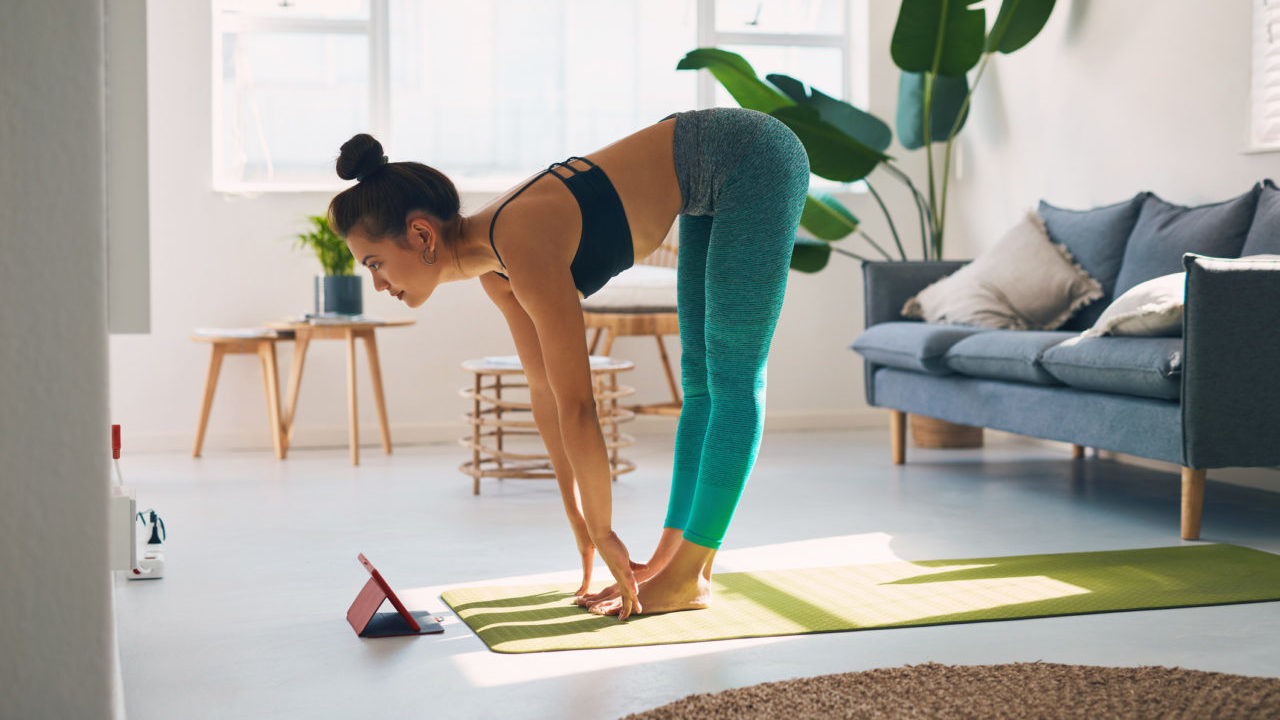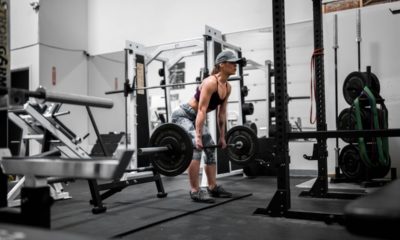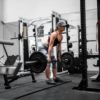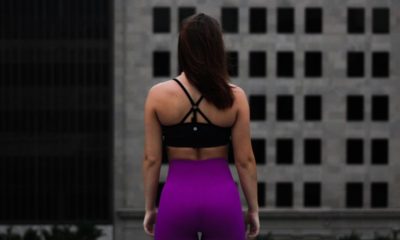Build Muscle
How Improving Your Flexibility Can Increase Your Strength Gains
You may know that to stimulate proper activation of the working muscles you need to train them through their entire range of motion. However, what many don’t consider, is that range of movement can vary from person to person.
You may think that lifting heavy and eating right is all it takes to grow stronger, but is it possible that something as simple as stretching could play an equally important role?
Well, that’s exactly what we’re going to examine today, as we look at how improving your flexibility can increase your strength gains.
Why Is Flexibility Important?
Flexibility is important for many reasons, regardless of whether or not you work out. A good level of flexibility ensures you have good posture, helps to prevent injury, and even makes day-to-day tasks easier to complete.
All of these factors combine to help keep your body in prime operating condition. They’ll keep you feeling young, energetic, and more mobile, allowing you to do the things you love for as long as you want.
How Flexibility Affects Strength
Range of motion affects the degree to which muscle fibers are engaged in a lift, which in turn determines the level of force produced throughout the movement.
This means if we want to generate more force and increase strength, we should be flexible enough to complete an exercise through its full range of movement.
The easiest way to explain this is via an example:
Let’s use a pec fly…
At the top of the movement, you’re mainly using your inner chest. As you lower the weights and begin to stretch the muscles, you’ll gradually engage more of the pecs the further you go.
For someone with a limited range of motion in their shoulders, this movement will be considerably shorter than someone that has full range.
That means not only will they be limiting the areas of the muscle that are worked, but they’ll also be able to use less weight, limiting development even on the parts of the muscle that are engaged.
So whether you’re training for strength, size, body composition, or anything else, a greater level of flexibility can dramatically help increase your strength levels.
Types Of Stretching To Improve Strength
You should now understand the importance of stretching, however, you need to make sure you know what you’re doing. As good as stretching is for a muscle, it can also put it at a greater risk of injury when performing the stretch itself.
To get the most out of stretching, you need to make sure you know what type is most suitable, as well as how to perform it effectively and safely.
Static Stretching
Static stretching is the most common type of stretching and is exactly as it sounds. You perform a stretch in a static position and hold it for the desired amount of time.
Static stretching is particularly good for your posture, as it helps get your muscles in the correct position while at rest. This is important for exercises like deadlifts or squats, where maintaining the proper form is an essential component to avoiding injury.
Ensuring your body is correctly aligned lets you engage the correct muscles, make sure pressure isn’t put on the wrong parts of the body, and helps to improve your development at an enhanced rate.
Dynamic Stretching
Dynamic stretching will feature many of the same stretches as static stretching, however, this time there will be movement involved. Instead of holding a stretch for the entire duration, you’ll instead ease in and out of it, holding it for a few seconds each time.
The idea is that with each movement you’ll be able to go a little deeper into the stretch than the previous occasion, helping to improve your range of motion more quickly. However, it’s important to do these in a slow and controlled manner, as being too aggressive can lead to you overextending the muscle and injuring yourself.
Dynamic stretching is particularly effective immediately before a workout. This is because not only will it stretch your muscles and help improve mobility, but it will also warm them up as well.
Getting everything moving not only reduces the risk of injury but gets the muscle fibers firing, allowing for greater force to be implemented than you’d get when performing the exercises cold.
Ballistic Stretching
Ballistic stretching is yet another elevation of the stretches we’ve previously looked at. You’ll again be performing the stretches while moving, however this time you won’t be doing it in a slow and controlled fashion.
Instead, you’ll be using the moment of your body (or a limb) to bounce in and out of the stretches, forcing your muscles to extend beyond their normal range of motion.
As I warned in dynamic stretching, this is potentially dangerous and can lead to injury if performed incorrectly, therefore the stretches must be performed with a great level of care.
It’s helpful for those involved in disciplines like powerlifting, where explosive strength is essential. Ballistic stretching will not only stretch and warm the muscles but also prepares them for the rapid changes of force and direction that are required when performing these types of exercises.
PNF Stretching
PNF stretching is the most advanced form of stretching available. It features 3 methods of stretching:
- contract-relax, where you contract the muscle during a dynamic stretch
- antagonist-contract, similar to contract-relax, only the muscle you contract is the antagonist to the one you’re stretching
- contract-relax-antagonist-contract, where you perform the previous two methods in sequence with one another
Due to the focus that’s required to effectively perform PNF stretches, it increases the mind-muscle connection. This is great for preparing for a training session, as it can allow you to obtain a stronger contraction in a muscle, engage more fibers and lift more weight.
Three Exercises To Improve Strength In The Big 3 Lifts
So, now you know exactly what the types of stretches are and how to perform them, I want to give you a few examples and explain how each can affect one of the “big 3” lifts.
Barbell Squat: Deep Squat
A deep squat is where you perform a traditional squatting movement while trying to bring your buttocks as close to your heels as possible. This forces the muscles in your legs to work through their entire range of motion and will help you gradually get lower over time.
By performing these, it adds a similar increase in mobility to your regular squats. This will allow you to develop more of the fibers throughout the entire muscle, which in turn, increases the overall strength of the muscle, allowing you to lift more weight as a result.
Deadlift: Hip Flexor & Groin Stretch
You can get a great hip flexor and groin stretch by performing a lunge. However, instead of the traditional position, you’ll have the shin of your back leg lying flat on the floor. While keeping your back straight and vertical, you want to place your front foot as far forward as possible and hold the position. Once you finish, you’ll then need to repeat it on the other side.
When moving a large amount of weight and using your entire body, there are many opportunities for strains and tweaks.
By stretching out two of the biggest problem areas (your hips and groin) you’ll increase mobility and readiness when beginning the lift.
If your previous warm-up routine only involved warm-up sets or dare I say no warm-up at all, you’ll likely find that you’re able to complete reps with higher weights than usual and improve your strength gains in the process.
Bench Press: Lacrosse Ball Pec Stretch
To perform a lacrosse ball pec stretch, stand upright and place the ball on the outside of the pec, just under the shoulder. Hold the ball between your chest and a wall where you have space on at least one side (a doorframe works well).
When you feel a tight or tender spot, lean forward into the open space with the side of the chest not being stretched. So if you were stretching your right pec, you’d lean forward with your left. This action simulates protraction and retraction of the shoulder and you will be able to feel pressure being applied to the pectoral area.
You can also raise your arm (same side as the pec being stretched) above 90 degrees or abduct the same arm for a greater stretch. This helps to manipulate the muscle fascia, release knots and increase blood flow to the area, all of which helps the muscle to move more freely through a greater range of motion.
It is not necessary to try and roll the ball over the muscle as a form of “massage”. You may end up doing more harm than good. The ball should stay still while you maneuver your body to apply pressure to the stretch.
Performing this stretch allows you to go deeper at the bottom of a bench press, engaging more fibers, spread out across the entire pec. This not only helps to build a fuller muscle but will also dramatically increase strength due to the greater number of fibers recruited on each rep.
Final Thoughts
Flexibility is a constantly overlooked aspect of fitness that can have a dramatic impact on both your strength and overall health. Incorporating a sensible stretching regimen into your workouts will help you avoid injury and achieve strength gains at a faster rate.
With that in mind, now is the perfect time to give it a try for yourself, while all the information is still fresh in your memory.
Author Bio: Sam Watson is a functional training specialist and writer for startrowing.com. She has a passion for all forms of exercise and loves being able to help others move more freely.














